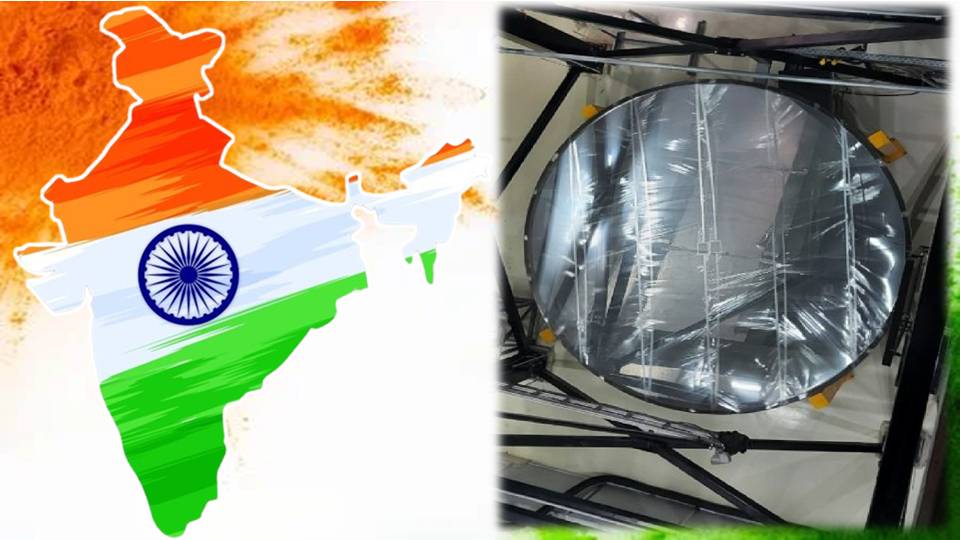The cold war saw a fierce space competition between the then USSR and USA. In that competitive environment they tried to be ahead of their rival and in a way wanted to be the first in every new space frontier. The first man in space, first man on moon and many other feats were achieved either by the USSR or by the USA. But times have changed and India is becoming the front-runner country to achieve many new firsts. Be it the first country to enter into the Martian orbit in the first attempt or launching a record 100+ satellites in one go. With the new development in the space domain India yet again becomes the first country to achieve anything of this sort.
World’s First Liquid Mirror Telescope
Gone are the days when India used to be 3rd or 4th in achieving new milestones in space endeavours. Now, India is steadfast to become the leader in the space frontier. Evidently, India has become the first country in the world to establish a liquid mirror telescope.
Also Read: ‘Sasta, Sundar, Tikau’ – ISRO is making India’s very own space shuttle
The International Liquid Mirror Telescope (ILMT), which is the largest in Asia, has been set up at the Devasthal Observatory. The observatory is housed in the Aryabhatta Research Institute of Observational Sciences (ARIES), Nainital in Uttarakhand. Prof. Dipankar Banerjee, Director, ARIES said, “ILMT is the first liquid mirror telescope designed exclusively for astronomical observations installed at the Devasthal Observatory of ARIES”.
Also Read: With ‘Mission 2024’, ISRO has now set its sight on Venus
How will Liquid Mirror telescope work?
The observatory has been developed by scientists from India, Belgium, and Canada. The Liquid Mirror telescope is a 4-metre-diameter rotating mirror made up of a thin film of liquid mercury to collect and focus light. Mercury is used as it is a reflective liquid and is spun so that the surface is curved into a parabolic shape which is ideal for focusing light. To protect its distortions from the wind, it is covered by a thin transparent film of mylar.
The reflected light passes through a sophisticated multi-lens optical corrector that produces sharp images over a wide field of view.
Earlier, very few liquid-telescopes were used, that too either for tracking satellites or were deployed for military purposes. The ILMT will be the third telescope that is established at Devasthal, being a hilly place it is one of the best sites for astronomical observations. The ILMT is set to commence full-scale scientific operations in October. It will complement other established telescopes and work along with the Devasthal Optical Telescope (DOT), the largest telescopes operating in India (of the 4-metre class). The 1.3-metre Devasthal Fast Optical Telescope (DFOT) is also operating at this observatory in ARIES. These telescopes will help in identifying transient and variable objects such as supernovae, gravitational lenses, space debris, and asteroids. The space debris and naturally occurring asteroids are becoming a threat to the orbiting satellites.
Threat of Space Debris
According to an old 2021 data, around 6,542 satellites are there in space, out of which 3,372 satellites are active and around 3,170 are inactive and adding to the already crowded space junk. It is said that space debris is no longer a nuisance as it has already reached a level of grave threat. Evidently, in November 2021, a chunk of a Chinese satellite almost hit the International Space Station (ISS), although the mishap was averted, the threat is constantly looming as a mere small nut bolt can damage more than a cannon because of the speed at which the debris roam around in space.
Read More: India takes a massive leap in enhancing space security as ISRO initiates ‘Project NETRA’
That is the reason why, acting as a responsible nation, India has stepped up to establish this world’s first liquid mirror telescope to correctly detect, predict the path of space junk, debris and asteroids to avoid collision, mishap and loss of crucial military and civilian communication satellites. With this India yet again proves its prowess in the space sector as well as taking a lead as a space detective to protect the World from any mishap.
